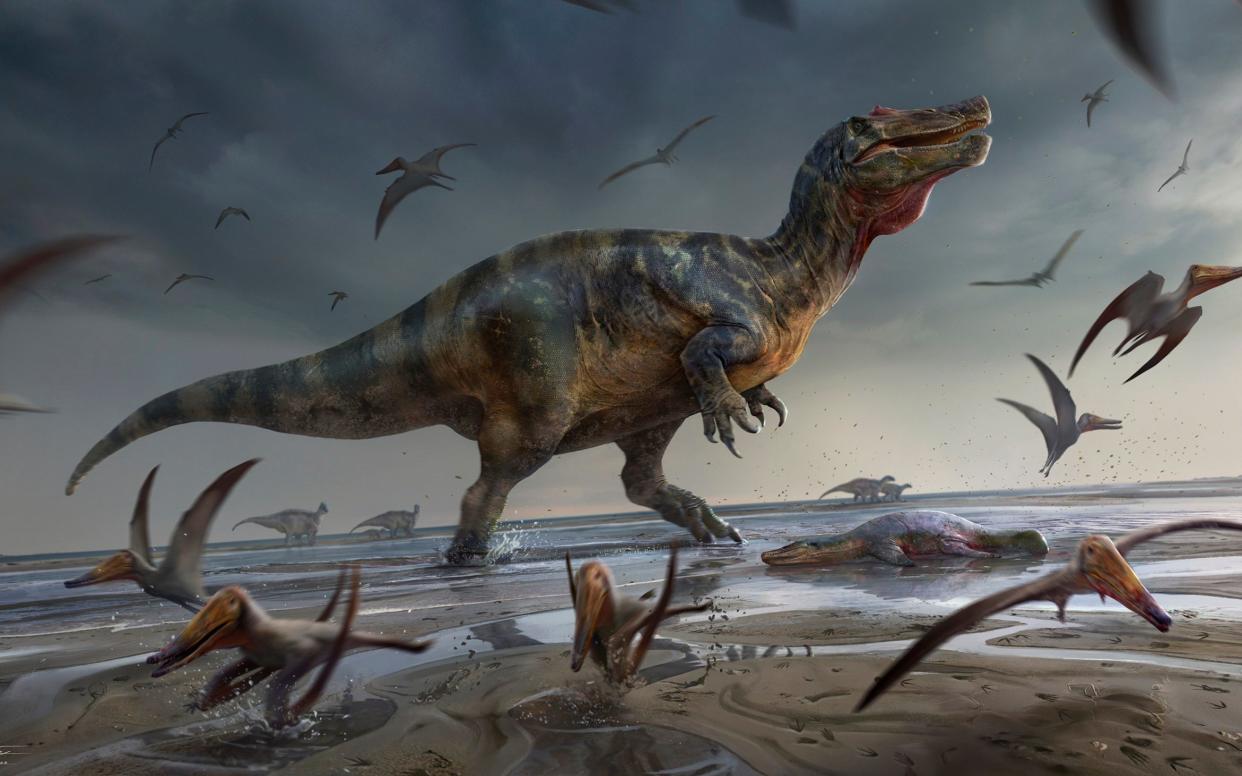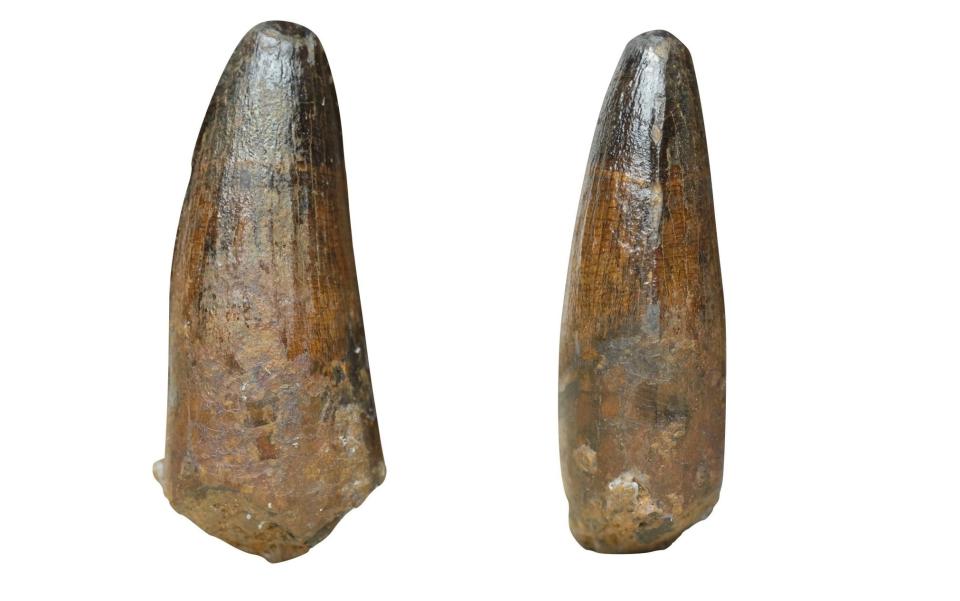Fish-eating dinosaurs with crocodile heads roamed southern England

East Sussex was once home to semi-aquatic fish-eating dinosaurs with crocodile heads, scientists have discovered.
Palaeontologists at the University of Southampton have re-examined a tooth which was found in the early 1900s, and stored at the Hastings Museum & Art Gallery.
They found it is a species belonging to the spinosaur family which roamed southern England more than 125 million years ago.
Dr Neil Gostling, the project supervisor, said: “While we can’t formally identify a new species from one tooth, we can say this spinosaur tooth doesn’t match any of the existing species we know about.
“Given how many individual teeth exist in collections, this could be just the tip of the iceberg and it’s quite possible that Britain may have once teemed with a diverse range of these semi-aquatic, fish-eating dinosaurs.”
Fish scales found in their stomachs
Spinosaurus are thought to have lived between the water and the land, diving down to fish with their long snout.
Fish scales have been found in their stomachs, and they had smaller and denser bones than other land-based dinosaurs allowing them greater control over their buoyancy, experts believe. Their conical teeth were also more suited to a fish diet rather than meat.
The 140 million-year-old tooth was discovered in a thick, rock structure named the Wealden Supergroup which is famous for its spinosaur fossils including those of the Baryonyx found in Surrey in 1983.
Since then many teeth have been found and identified as Baryonyx, but experts suspected they could be from a range of different dinosaurs.
Results from the new tooth suggest that multiple types of spinosuars must have been living in the region during Early Cretaceous times.

Dr Darren Naish, a palaeontologist, said “Dinosaur teeth preserve numerous anatomical details and we can use various analytical techniques to see how similar, or different, they are to other teeth.
“Our new study shows that previously unrecognised spinosaur species exist in poorly known sections of the Wealden’s history, and we hope that better remains will be discovered that improves our knowledge.
“Here’s another reminder that even well-studied places like southern England have the potential to yield new dinosaur species.”
The team said that the findings show the importance of maintaining museum collections so that new discoveries can be made as technology develops.
“The diversity of palaeoenvironments is not always hidden in rocks, it is often waiting in a museum, its importance waiting to be rediscovered,” added Dr Gostling.
“Museums themselves are places to make exciting discoveries as our understanding of specimens changes from the time they were deposited
“What this work highlights is the importance of keeping collections alive, and developing our understanding of them. “
The new dinosaur was reported in the journal PeerJ.

